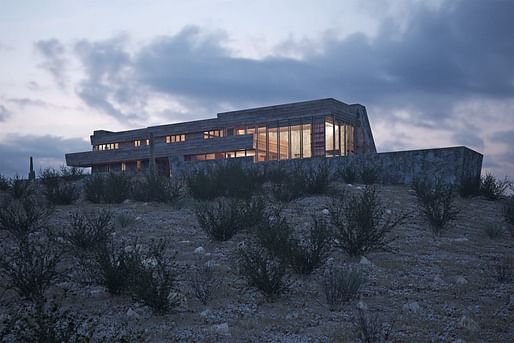
Out of the 1,171 architectural designs that Frank Lloyd Wright created in his lifetime, around 660 of them remained unbuilt. Using advanced visualization techniques, architect David Romero brings Wright's unbuilt designs one step closer to reality in a series of striking, computer-generated renderings. A longtime Wright enthusiast, Romero has been creating renderings of the legendary architect's designs since he launched the website Hooked on the Past in 2014.
Most recently, Romero worked with the Frank Lloyd Wright Foundation to create a series of renderings of Wright's unbuilt Gordon Strong Automobile Objective, which was a tourist attraction he envisioned in 1924 to be built at the top of Sugarloaf Mountain in Maryland. Romero has also recreated Wright's unbuilt designs for the Roy Wetmore Car Repair and Showroom, the Butterfly Wing Bridge, and the Valley National Bank, to name a few.

In recreating the Gordon Strong Automobile Objective, Romero referred to photos of the Guggenheim Museum in New York to help him understand how the structure might have been realized. He then imported plans, sections, elevations, and Wright’s drawings into AutoCAD to create the base of the structure, as well as Autodesk 3ds Max — with the RailClone plugin — to create the spiral. Romero then added details like traces of dirt and rain, imperfections, and wear to make the structure appear more realistic.
“While we will never know the true experience of visiting an unbuilt Wright design, these renderings can convey a bit more sense of space and light than the drawings alone,” says Stuart Graff, president and CEO of the Foundation. “As we wonder what might have been if these designs had been realized, Romero’s work gives us a sense of Wright’s innovative genius that we can continue to learn from and be inspired by.”
8 Comments
"Realistic" -- lol
I was looking for this comment haha
Worth it just to read the name "Roy Wetmore."
Also, it's fine if folks want to spend time drawing FLW. Probably keeps them out of trouble.
Agreed, on both counts!
This posting incorrectly states that the Pauson house was “unbuilt.” The house was indeed built but unfortunately burned down within two years of its construction.
Hi there... Yes your right the first rose pauson house did Tragically succumb to fire. But this design posted here looks like a replacement design. as the first house looks much smaller in square footage than this "new" design... What are your thoughts???
I believe that the scale is pretty exact. According to Mr Romero’s site it is a virtual reconstruction of the lost house. He did a massive amount of work and research on these 3D reconstructions with the help of the Frank Lloyd Wright forum. I followed much of the thread for the Pauson house reconstruction. It is a great example of crowd sourced research into a building that has limited documentation. A fascinating book on this house is available on this house: Building the Pauson House: The Letters of Frank Lloyd Wright and Rose Pauson which is edited by and introduced by Allan Wright Green, the great-nephew of Rose Pauson. This book contains much of the extant documentation on this much missed house although the format is smaller than I would like. I would also recommend Mr Romero’s free VR app of the Larkin Building, another lost Wright masterpiece.
Block this user
Are you sure you want to block this user and hide all related comments throughout the site?
Archinect
This is your first comment on Archinect. Your comment will be visible once approved.